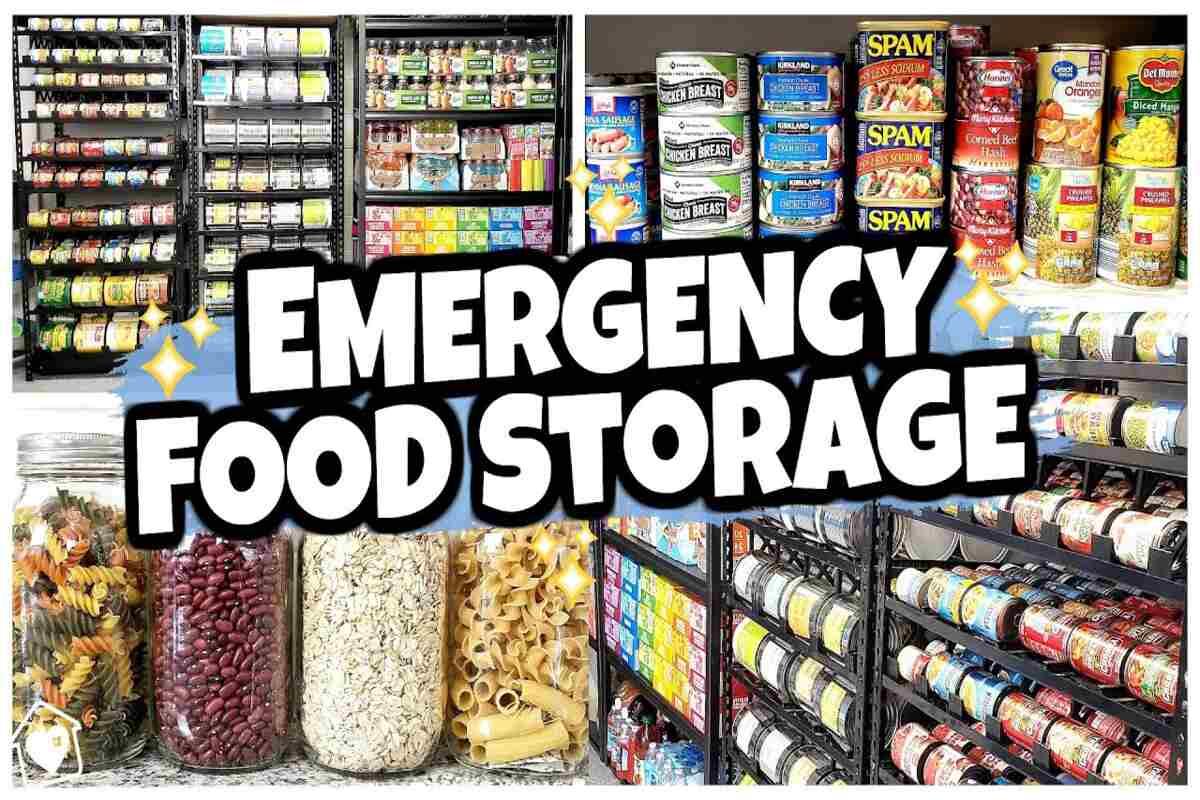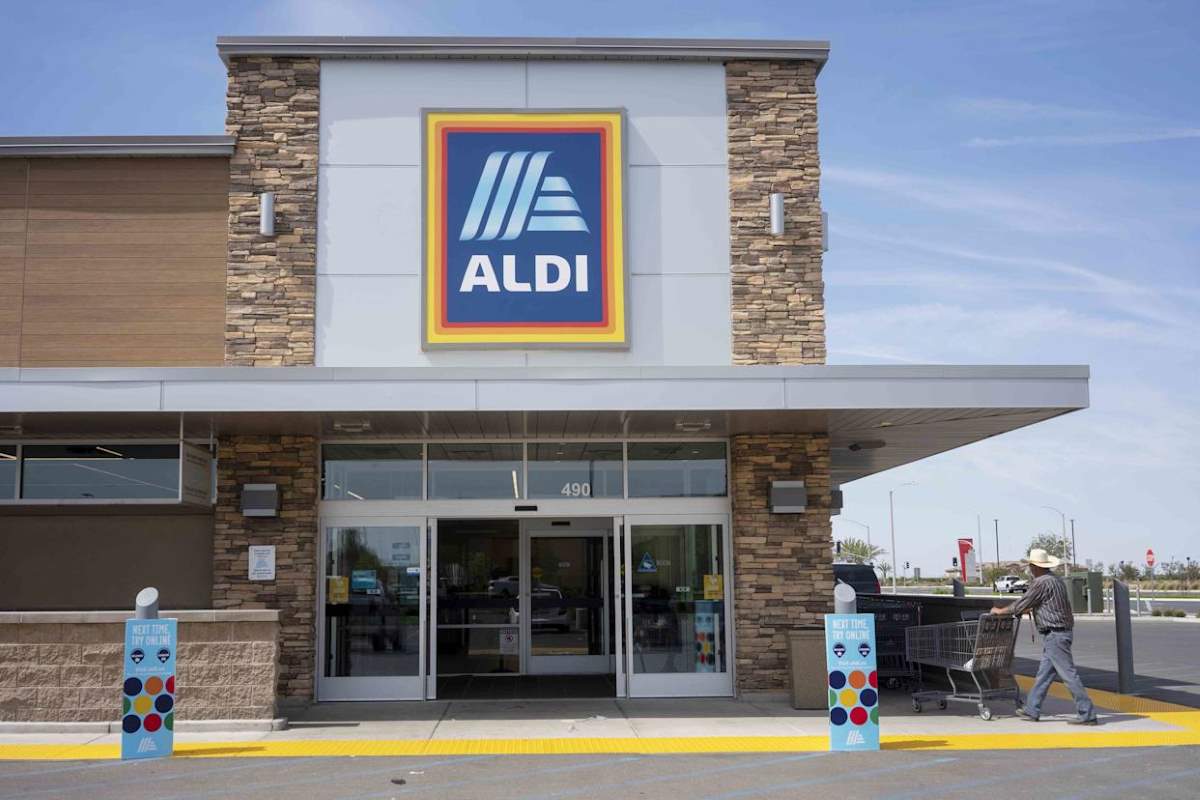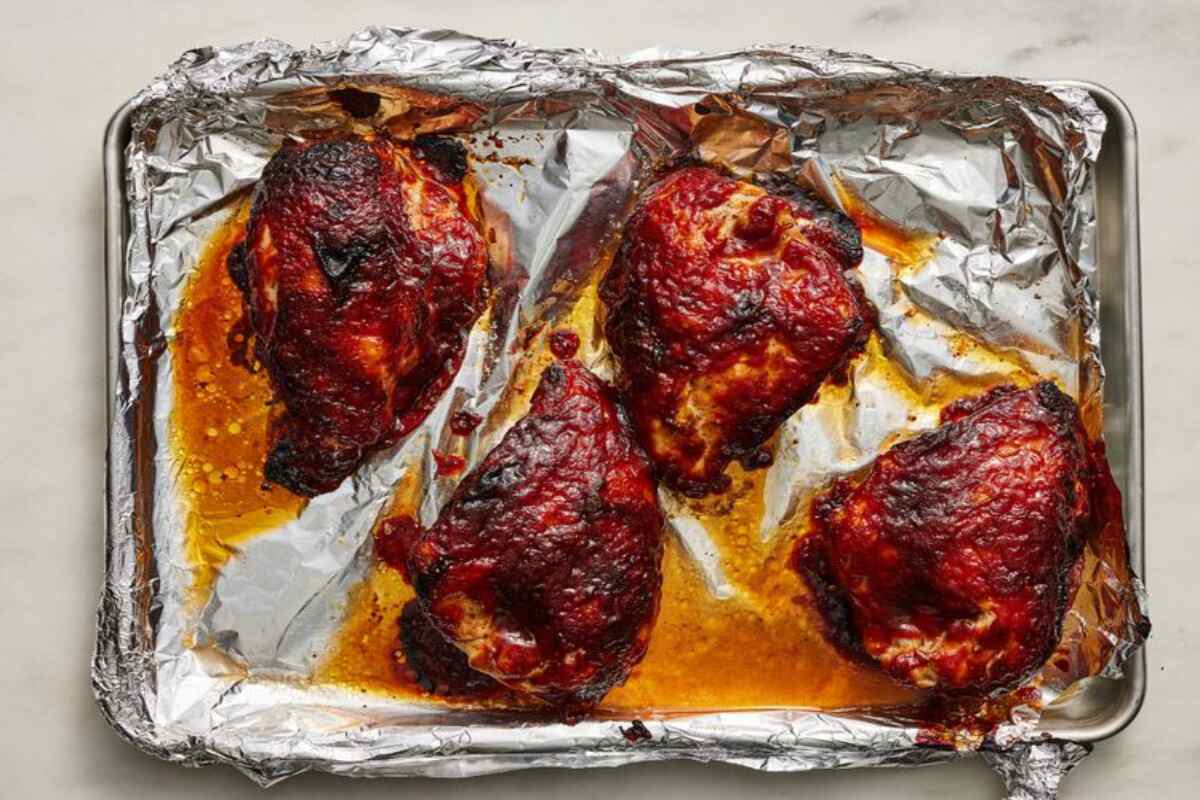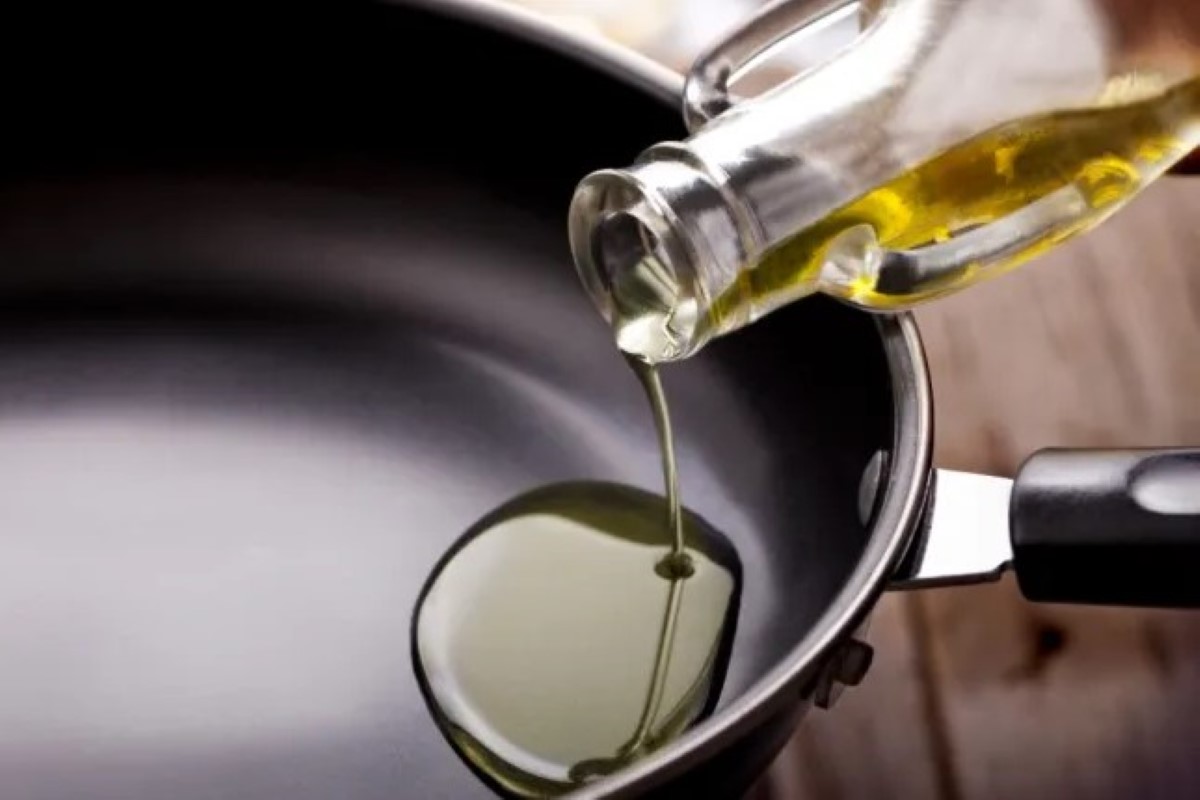Not everyone supports maintaining an emergency food stockpile. Some folks see making such preemptive plans as a sign of chronic pessimism. However, it is better to be safe than sorry in emergencies.
The recent pandemic was a good example of an emergency that caused toilet paper shortages in the US and food chain disruptions around the globe. Other events that constitute emergencies or make visiting a grocery store impractical are blizzards, hurricanes, floods, or a nuclear fallout.
Of course, it would be impractical to feed in an emergency like you are having a feast. Also, you want to include long shelf-life foods in your list as they often pass as the best emergency foods. Are you considering creating and maintaining an emergency food stockpile? Follow this emergency food storage guide to understand the dos and don’ts of setting up a survival pantry and prepping for emergencies.
Why You Need an Emergency Food Stockpile
There are various types of emergencies, like environmental disasters, service disruptions, health-related crises, or geopolitical unrest. Irrespective of the form in which the emergency comes, you want to get enough calories during that period.
The primary goal of a survival pantry is to provide enough vitality for health and nutritional sustenance during an emergency. So, food items that pack as many calories as possible per volume or weight should be at the top of your list. Why? A survival pantry will accommodate a far less volume of survival food supplies relative to your regular pantry.

“You want some nutrients and some fiber—something to keep your diet normal,” says Barry Swanson about emergencies. Swanson is a professor emeritus of food science at Washington State University. The best emergency foods may deviate slightly from your flavor preferences but are sure to provide the necessary nutrients.
ALSO READ: Are Organic Foods Really Healthier? The Truth Behind the Hype
Essential Non-Perishable Foods to Include in a Survival Pantry
We look beyond the rich nutrient content when creating an emergency food stockpile. Perishability and shelf-stability are equally important factors to consider. Foods with a long shelf life can stay in storage for extended periods and remain palatable.
To maintain a sustainable emergency food stockpile, foods with long shelf-life should dominate the list. This logic points to canned foods as the first choice for the shelf-stable foods lists. The canned foods should be such that they do not require refrigeration after the first use. According to the USDA, the best canned foods for emergencies remain wholesome for 1.5 to 5 years.
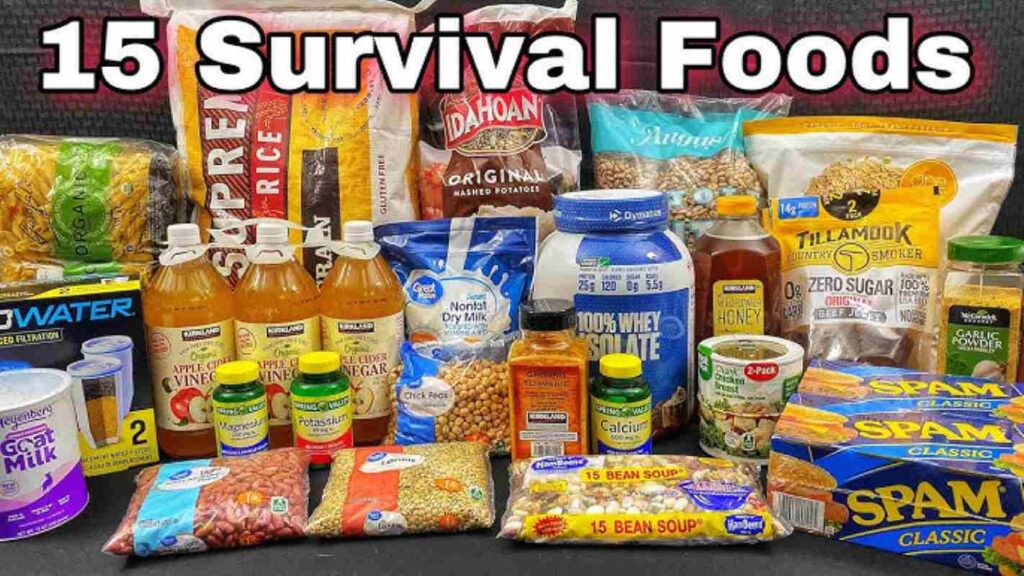
Below is a list of top-priority, nutrient-dense and shelf-stable food products for your survival pantry.
- Fruity Multivitamins
- Vacuum-sealed pepper, coffee, tea, salt and sugar
- Powdered milk
- Sports drink
- Bottled water
- Quinoa, oats, brown rice and pasta as carbohydrate and fibre sources
- Canned sauce, soup and chilli
- Canned beans
- Canned vegetables
- Canned turkey, chicken, salmon, or tuna, as the protein source
- Dried fruits
- Healthy snack bars
- Cereals and whole nuts
- Wheat crackers
- Peanut butter
Judging by the number of canned foods in an emergency food stockpile, a can opener should go on the list of items in your survival pantry. Similarly, having a propane or charcoal stove handy could help loads. Draw up an estimation and stock food items that sustain each family member for up to two weeks. If the emergency eventually arrives and you find that evacuating your home becomes necessary, pick out a 3-day sustainability stash from the survival pantry.
After setting up the food stash, it is advisable to check the survival pantry occasionally, biannually. Most of the time, no hurricane or tornados occurs. Consequently, you only need to replace soon-to-expire items with fresher ones and consume the oldies as regular meals.
Water and Hydration Essentials
Water is so essential for our subsistence that we’ll consider how to maintain its supply during emergencies.
Potable water usually becomes scarce during water-related emergencies like the flooding aftermath of earthquakes or hurricanes. The US Center for Disease Control and Prevention (CDC) recommends storing a 3-day supply of potable water for each family member. This estimation should amount to 1 gallon per day for an individual. You can tailor the estimation from there to suit your family size.
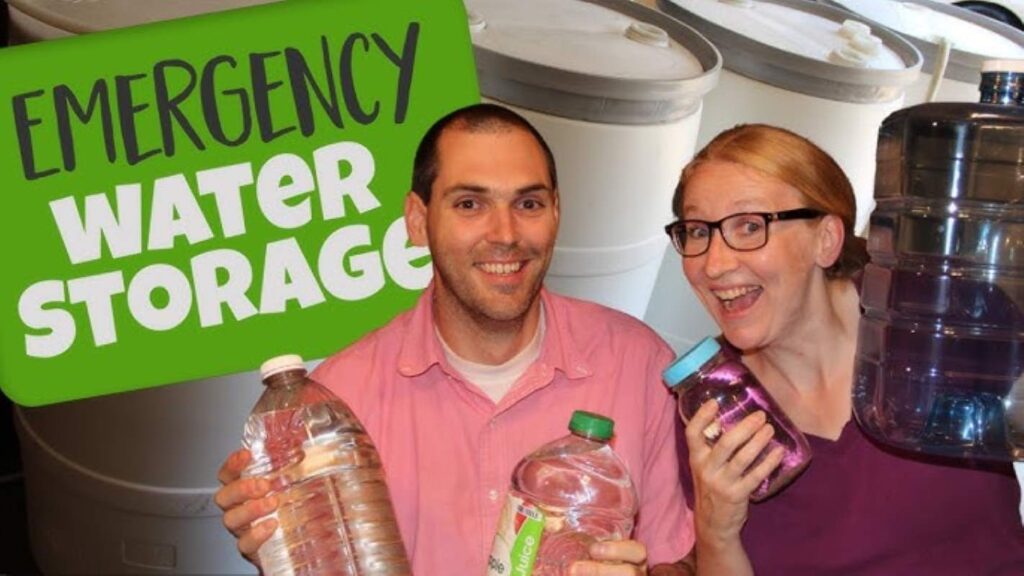
Here are some tips on stockpiling clean water for emergencies.
- Use only FDA-approved and food-grade water containers. Avoid containers that will leach microplastics or cause other forms of water contamination.
- If you store water in containers, don’t keep it for more than six months.
- Keep a bottle of unscented chlorine bleach as part of the emergency stash.
- It is always advisable to store some packs of store-bought commercial bottled water. These may be your only reliable source of potable water during an emergency.
Finally, store emergency water reserves properly. Ensure the water is stored in cool parts of the house or survival pantry to avoid exposure to extreme temperature fluctuations. Since water absorbs volatiles, keep containers holding this life-saving fluid away from toxic substances like lead, gasoline or pesticides. Beyond food availability, food safety in emergencies is also a paramount concern.
Expiration Dates and Rotation Strategies
Setting up a survival pantry is not an effort to be made in isolation. You need to understand the best rotation strategy for each food category in the stash. For one, you want to be prepared and avoid letting any food go to waste. So, the best bet is adopting the First In, First Out (FIFO) strategy that many grocery stores equally utilized in stocking their aisles.
ALSO READ: Lab-Grown Meat: Will We Be Eating It in the Next 10 Years?
Emergency Cooking and Food Preparation
Beyond generating a shelf-stable food list and strictly following this emergency food storage guide, you should consider a thing or two about cooking during emergencies. Some emergencies cut consumer access to amenities like water, gas and electricity. Some of the best prepper food in your survival pantry may do no good if you have no means of cooking it.
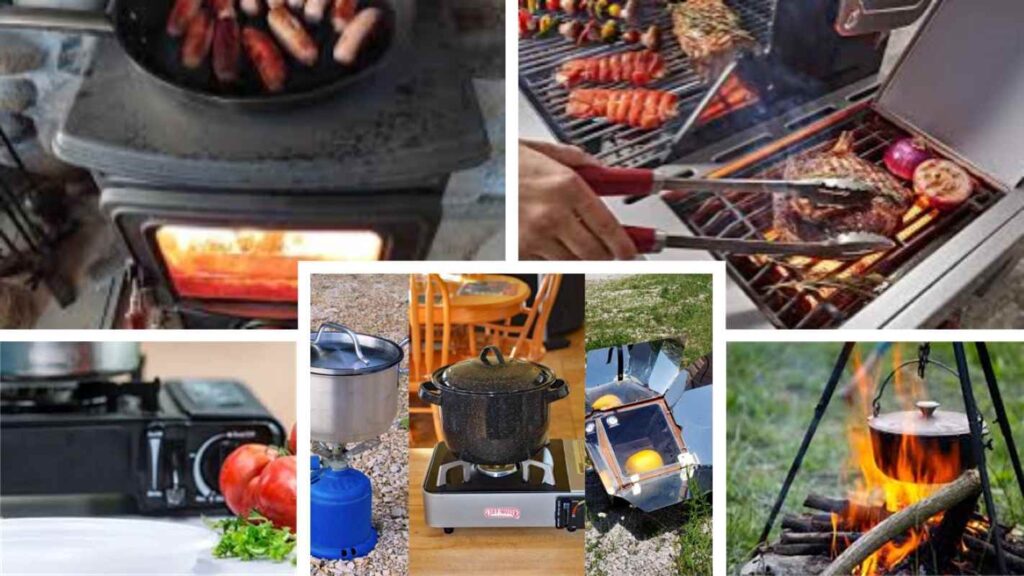
Buying a portable power generator may sound paranoid, but it would make it possible to cook during emergencies. If you are settling for cooking gears that do not require electricity, remember to only use them outdoors; your safety is paramount. During most emergencies, it is easy to improvise for lost shelter and garments, but getting food without some prior preparation could be very difficult. This chip off the FEMA’s emergency food preparedness guide will help create your emergency food stockpile.







